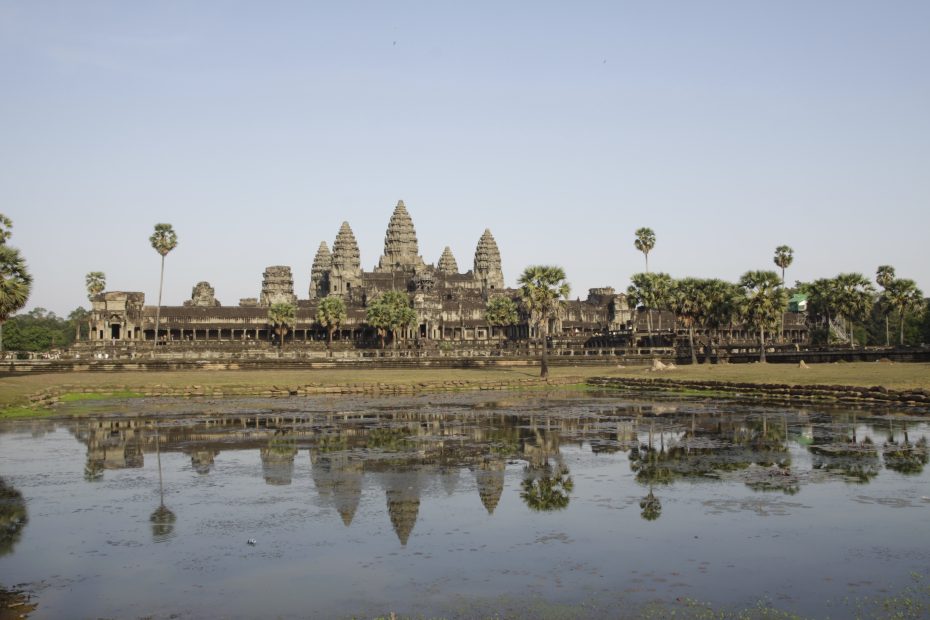Table of Contents
Introduction
The ancient Khmer civilization centered in modern-day Cambodia produced some of the most impressive monuments in Southeast Asia, led by the breathtaking Angkor Wat. This Hindu-Buddhist empire flourished from the 9th to 15th centuries AD and left a cultural and architectural legacy that continues to awe visitors today. Join us on a journey back in time to uncover the mysteries of this fascinating culture.
Geography and Climate
The Khmer Empire was centered in the tropical forests and river valleys of what is now Cambodia. This region has a tropical monsoon climate, with a rainy season from May to October and a dry season for the rest of the year. The abundant rivers and wet climate allowed for intensive rice cultivation, which supported the large population centers of the Khmer.
Origins and History
The forerunner of the Khmer Empire was the kingdom of Funan, which dominated Southeast Asia during the 1st to 6th centuries AD. In the early 9th century, Jayavarman II established the Angkor Empire and proclaimed himself the “universal monarch”, marking the beginning of the Khmer civilization. Over the next 600 years, the Khmer experienced periods of growth and decline under various kings.
Religion and Culture
The Khmer originally practiced Hinduism but eventually adopted Therevada Buddhism while retaining elements of Hindu mythology. This religious worldview shaped the extraordinary Khmer architecture, art, and culture. The abundant temples, stepped pyramids, and iconic Angkor Wat bear testament to the syncretism of Hinduism and Buddhism.
Economy and Society
The Khmer economy was dominated by rice cultivation on an elaborate irrigation system, supplemented by trade. The king and aristocracy controlled the land and labor of peasants and slaves. Khmer society was highly stratified, with the king at the top, followed by priests, nobles, merchants, and farmers/slaves.
Daily Life
Men worked as laborers, soldiers, and in governing roles. Women managed household duties and assisted in the fields. Staple foods included rice, vegetables, and tropical fruits. For entertainment, the Khmer enjoyed music, theater, and board games.
Decline of the Empire
After centuries of prosperity, the Khmer Empire began to decline in the 13th century, weakened by expensive building projects and wars with neighboring kingdoms. The growing Thai Kingdom sacked Angkor in 1431, after which it was abandoned as the center of the Khmer state.
Rediscovery and Restoration
The ruins of Angkor remained largely forgotten until the French explorer Henri Mouhot explored and documented the site in the mid-19th century. Since then, Angkor has become an important archaeological site, subject to conservation efforts by UNESCO and others.
Visiting Angkor Wat Today
The layout of Angkor Wat, the best preserved of the Angkor temples, represents Hindu cosmology and iconography. Longcauseways lead past imposing stone structures and intricately carved bas-reliefs depicting scenes from Hindu epics. Descendants of the Khmer still live nearby, offering visitors a window into traditional culture.
Legacy and Significance
At its peak, the Khmer Empire was one of the most advanced civilizations in Southeast Asia. The monumental architecture, complex irrigation systems, exquisite art, and rich culture left an indelible mark on the region. Angkor Wat remains a poignant symbol of national pride, resilience, and religious expression for the Cambodian people.
Conclusion
Our journey through the Khmer Empire revealed a civilization of enormous cultural wealth and visionary architecture, exemplified by the magnificent temple city of Angkor Wat. Though the empire faded centuries ago, its cultural legacy lives on as one of humanity’s architectural and artistic wonders. The Khmer showed us the heights that a small kingdom in Southeast Asia could reach through ingenuity, ambition, and strong national identity.
FAQs
FAQ 1: Who first rediscovered the ruins of Angkor Wat?
The lost temples of Angkor Wat were brought to the world’s attention in the mid-19th century by the French explorer Henri Mouhot, who extensively documented the site.
FAQ 2: How did religion influence Khmer society?
Religion was profoundly influential in Khmer society. Hindu and Buddhist concepts, iconography, and mythology shaped the culture, architecture, social hierarchy, and daily life of the Khmer people.
FAQ 3: What led to the decline of the Khmer Empire?
Over-spending on massive building projects, expensive wars with neighboring kingdoms, environmental factors, and the growing power of the Siamese Kingdom contributed to the weakening and eventual decline of the Khmer Empire.
FAQ 4: What architectural features make Angkor Wat unique?
Angkor Wat combines Hindu and Buddhist architectural elements, with multiple levels representing cosmological themes. Intricate bas-reliefs, towers in the shape of lotus buds, long halls, massive moats, and other features distinguish Angkor Wat.
FAQ 5: Why does Angkor Wat remain important to Cambodians today?
Angkor Wat is a source of immense cultural pride for Cambodia. It represents the brilliance of Khmer civilization and resilience of Cambodian culture despite periods of hardship in modern times.
